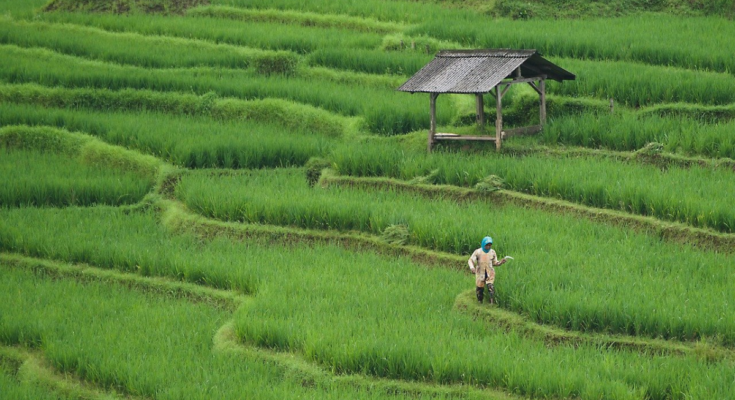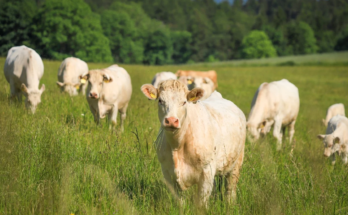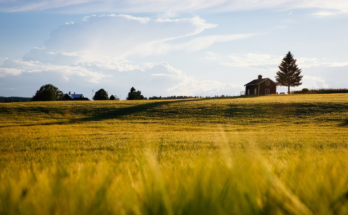Agriculture is the backbone of many economies worldwide, providing food, raw materials, and employment to millions. As vital as agriculture is, it also comes with a myriad of risks, including natural disasters, theft, and equipment failures. Agricultural Property Insurance is designed to protect farmers and agricultural businesses from these risks, ensuring that their investments are safeguarded. This article will explore the details of Agricultural Property Insurance, including its importance, coverage options, costs, and claims processes.
What is Agricultural Property Insurance?
Agricultural Property Insurance is a type of insurance that protects the physical assets of a farming operation, including buildings, equipment, and livestock. This insurance provides financial coverage for losses due to various risks, such as fire, theft, vandalism, and certain natural disasters. Depending on the policy, it may also cover loss of income due to interruptions in the farming operation.
Key Features of Agricultural Property Insurance
- Comprehensive Coverage: Agricultural Property Insurance typically covers a range of risks, including damage to buildings, equipment, machinery, and livestock.
- Flexible Policies: Farmers can customize their policies based on their unique needs, allowing them to select coverage limits, deductibles, and specific risks they want to be covered.
- Business Interruption Coverage: Many policies include coverage for loss of income due to interruptions in the farming operation caused by insured events.
- Liability Protection: Some policies offer liability coverage, protecting farmers from claims arising from accidents on their property or injuries caused by their operations.
Importance of Agricultural Property Insurance
Agricultural Property Insurance is crucial for several reasons:
1. Risk Mitigation
Farming is inherently risky due to factors like weather unpredictability, equipment failures, and market fluctuations. Agricultural Property Insurance helps mitigate these risks by providing financial protection against losses that could otherwise jeopardize a farmer’s livelihood.
2. Investment Protection
Farmers invest significant resources in their operations, from land and buildings to equipment and livestock. Insurance safeguards these investments, ensuring that farmers can recover from losses and continue their operations.
3. Peace of Mind
Knowing that they have insurance coverage allows farmers to focus on their operations without the constant worry of potential financial ruin from unforeseen events.
4. Support for Agricultural Growth
By providing a safety net, Agricultural Property Insurance encourages farmers to invest in modern technologies and practices, ultimately contributing to the overall growth and sustainability of the agricultural sector.
Coverage Options in Agricultural Property Insurance
Agricultural Property Insurance policies can vary widely in terms of coverage options. Here are some of the most common coverage types:
1. Property Coverage
This covers the physical assets of the farm, including:
- Buildings: Coverage for barns, silos, storage facilities, and other structures.
- Equipment: Protection for tractors, harvesters, irrigation systems, and other machinery.
- Livestock: Coverage for the value of livestock in case of death or injury due to covered events.
2. Business Interruption Coverage
This coverage compensates farmers for lost income resulting from a covered event that interrupts their farming operations. It helps cover ongoing expenses, such as payroll and loan payments, during the downtime.
3. Crop Insurance
Although separate from Agricultural Property Insurance, crop insurance can often be bundled with property insurance. This coverage protects against losses due to crop failure from natural disasters, pests, and diseases.
4. Liability Coverage
Liability coverage protects farmers against claims arising from accidents or injuries that occur on their property. This is particularly important for farms that host visitors, such as agritourism operations.
5. Flood and Earthquake Coverage
Standard Agricultural Property Insurance may not cover flood or earthquake damage. Farmers in high-risk areas may need to purchase additional coverage to protect against these specific risks.
Costs of Agricultural Property Insurance
Understanding the costs associated with Agricultural Property Insurance is essential for farmers. Several factors influence the overall cost of premiums:
1. Type of Coverage
The cost of premiums will vary depending on the types of coverage selected. More comprehensive policies with higher coverage limits will generally have higher premiums.
2. Farm Location
Geographic location plays a significant role in determining insurance costs. Farms located in areas prone to natural disasters, such as hurricanes or wildfires, may face higher premiums.
3. Farm Size and Value
The size and value of the farming operation will impact premiums. Larger farms with more extensive assets will typically have higher insurance costs.
4. Risk Assessment
Insurance providers will assess the risk profile of a farming operation based on various factors, including the type of crops grown, livestock raised, and historical claims. A higher risk profile may lead to increased premiums.
5. Deductibles
Farmers can choose different deductible levels, which is the amount they must pay out-of-pocket before insurance coverage kicks in. Higher deductibles usually result in lower premiums but also mean greater financial responsibility in the event of a loss.
6. Discounts
Many insurance providers offer discounts for bundling policies, maintaining good safety records, or implementing risk management practices. Farmers should inquire about available discounts to help reduce their premium costs.
Cost Example
To provide an example, consider a farm with the following parameters:
- Total Asset Value: $500,000
- Coverage Type: Property, liability, and business interruption
- Premium Rate: 1.5% of asset value
- Deductible: $1,000
In this case, the annual premium would be:
Annual Premium = Total Asset Value × Premium Rate = 500,000 × 0.015 = 7,500
The farmer would pay $7,500 annually for insurance coverage, excluding the deductible amount for claims.
The Claims Process in Agricultural Property Insurance
Filing a claim under an Agricultural Property Insurance policy involves several steps:
1. Notification
Farmers must promptly notify their insurance provider of any losses. Most policies require notification within a specific timeframe, often within 24 to 48 hours of the event.
2. Documentation
Farmers should gather and provide necessary documentation, including:
- Proof of ownership of damaged property
- Receipts for repairs or replacements
- Photographic evidence of the damage
- Records of previous maintenance and inspections
3. Assessment
The insurance company will typically send an adjuster to assess the damage. The adjuster evaluates the extent of the loss and determines the amount to be compensated.
4. Settlement
Once the claim is approved, the insurance provider will issue a settlement based on the assessed value of the loss and the policy terms. Farmers should review the settlement offer carefully and ensure it aligns with their expectations.
5. Appeal Process
If a farmer disagrees with the settlement offer, they can appeal the decision. This may involve providing additional documentation or engaging in discussions with the insurance company.
Factors Influencing the Need for Agricultural Property Insurance
Several factors can influence the necessity and scope of Agricultural Property Insurance for a farming operation:
1. Type of Farming Operation
Different farming operations have unique risk profiles. For example, livestock farms may face different risks than crop farms, leading to varying insurance needs.
2. Geographic Location
Farms located in regions prone to natural disasters, such as floods, droughts, or severe storms, may require more comprehensive coverage to protect against potential losses.
3. Size and Scale of Operation
Larger farms with more extensive assets typically require higher coverage limits to adequately protect their investments.
4. Financial Situation
Farmers should assess their financial situation when determining insurance needs. Those with higher financial risk may benefit from more comprehensive coverage to safeguard their investments.
5. Future Plans
Farmers planning to expand their operations or invest in new technologies should consider the potential risks associated with those changes and adjust their insurance coverage accordingly.
Agricultural Property Insurance is an essential component of risk management for farmers and agricultural businesses. By providing financial protection against a wide range of risks, it safeguards the investments that farmers make in their operations. Understanding the various coverage options, costs, and claims processes associated with Agricultural Property Insurance is vital for farmers to make informed decisions.
As climate change continues to impact agricultural practices and the frequency of extreme weather events increases, the importance of having adequate insurance coverage cannot be overstated. Farmers must prioritize securing Agricultural Property Insurance to protect their livelihoods, investments, and the future of their operations.




